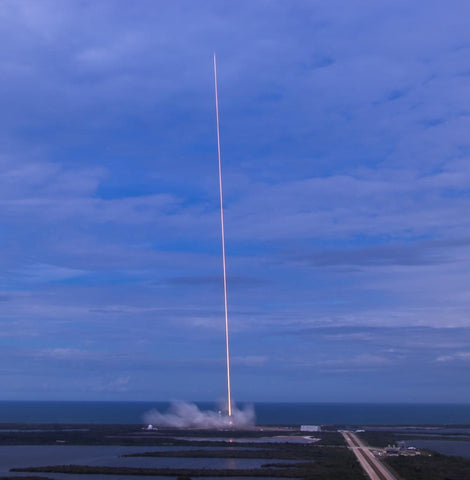NASA & iButtonLink
We are proud to announce that we have expanded beyond just a worldwide provider of sensor network technology and that our sensors now being used on the International Space Station. Flying above the earth at 17,150 miles per hour, the International Space Station is conducting research with the goal of learning more about life and space, and to test our human abilities for space travel.
Our Solution For Them

The SpaceX Falcon 9 rocket takes off from Kennedy Space Center.
Credits: NASA
iButtonLink LLC is ready to handle any challenge that it is presented. We work with our clients to ensure that their missions are completed. Our ability to handle unique and interesting problems is what sets us above anyone else. Our custom solutions are a pillar of our company's mission, whether it's a hobbyist trying to find a better way to make his dream come true, or a NASA researcher living every kid's dream of conducting research in space, iButtonLink is there to help.
This past June, we had 24 iButtons sent up on the SpaceX-11 launch to the International Space Station. The iButtons took part in NASA's FFL-02 mission,  which was to study how micro-gravity affects the cardiovascular system. The researchers used fruit flies as their research subjects since fruit flies experience similar cardiovascular problems that humans do. While being sent up to the International Space Station, the fruit flies were kept in cases that were embedded with iButtons sensors that monitored the temperature and humidity of the enclosures. The mission went off without a hitch and all samples were returned undamaged! We also had iButtons sent up with FFL-01 mission where our sensors were used to detect a temperature abnormality within some of NASA's hardware. "During that mission, the hardware experience was subjected to a temperature anomily[sic] and the data from the sensors was insturmental[sic] in helping us understand what happened." said Kevin Martin, a project manager at NASA.
which was to study how micro-gravity affects the cardiovascular system. The researchers used fruit flies as their research subjects since fruit flies experience similar cardiovascular problems that humans do. While being sent up to the International Space Station, the fruit flies were kept in cases that were embedded with iButtons sensors that monitored the temperature and humidity of the enclosures. The mission went off without a hitch and all samples were returned undamaged! We also had iButtons sent up with FFL-01 mission where our sensors were used to detect a temperature abnormality within some of NASA's hardware. "During that mission, the hardware experience was subjected to a temperature anomily[sic] and the data from the sensors was insturmental[sic] in helping us understand what happened." said Kevin Martin, a project manager at NASA.

